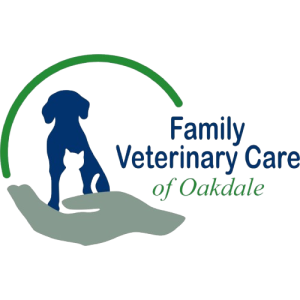Veterinary medicine isn’t just about diagnosing diseases and performing surgeries—it’s about communicating with pet owners, teammates, and sometimes, that one client who “read an article” and now knows more about kidney disease than you do.
Strong communication skills are essential for providing excellent patient care, managing clinic workflow, and—perhaps most importantly—keeping your sanity. Whether you’re explaining a complicated diagnosis, navigating a tough euthanasia discussion, or just trying to get through morning rounds without losing track of the game plan, effective communication can make or break your day.
At Family Veterinary Care of Oakdale, we know that clear, compassionate, and efficient communication isn’t just a “soft skill”—it’s a clinical skill. Let’s break down the why, what, and how of communication in veterinary practice.
Why Communication Matters in Veterinary Medicine
1. It Directly Impacts Patient Safety
Miscommunication in the clinic can lead to medical errors, client confusion, and less-than-ideal patient outcomes. Studies show that in-clinic communication affects patient safety, making team discussions, medical record accuracy, and verbal clarity essential Today’s Veterinary Practice.
Think of it this way: if a tech misunderstands your instructions for a CRI rate, or if a client doesn’t grasp why they really need to do that recheck bloodwork, the consequences land squarely on the patient.
2. Clients Who Understand Treatment Plans Are More Likely to Comply
Client compliance isn’t just about having good medicine—it’s about how well you explain the medicine. If a pet owner doesn’t understand why their dog needs three weeks of antibiotics instead of stopping when the symptoms improve, you’re going to see that dog back in the clinic sooner than you’d like.
According to Today’s Veterinary Practice, competent communication enhances veterinarian-client relationships, making them feel more engaged and confident in your recommendations Enhancing Veterinarian-Client Relationships.
3. Good Team Communication Keeps the Clinic Running Smoothly
Ever had a day where nobody seemed to know what was going on? One person thought you were doing a recheck, another thought it was a drop-off, and the client just wanted to know why they’ve been waiting so long?
When team communication falls apart, so does efficiency. Implementing better team communication tools can improve workflow, reduce stress, and make sure everyone is on the same page IDEXX.
How to Communicate More Effectively in Veterinary Practice
1. Master the Art of Active Listening
Communication isn’t just about what you say—it’s also about what you hear. Or, more accurately, what isn’t being said.
Clients don’t always have the words for what’s going on. They might say their pet is “just acting weird” when what they mean is subtle lethargy, inappetence, and increased respiratory effort that points to impending heart failure.
Great veterinarians don’t just listen to words—they pick up on tone, hesitation, and body language The Art of Hearing What Is Not Said.
2. Avoid Medical Jargon (But Don’t Dumb It Down)
There’s a fine line between being clear and talking down to a client. “Ruptured cranial cruciate ligament” means nothing to most owners, but “a torn ligament in the knee, like an ACL injury in people” makes immediate sense.
But be careful—clients can tell when you’re oversimplifying to the point of condescension. Strike a balance between clarity and respect.
3. Use Visual Aids Whenever Possible
Ever tried explaining pancreatitis to a client who just isn’t getting it? Handing them a printed diagram, a whiteboard sketch, or an online explainer video can make all the difference. Clients process information visually—use that to your advantage Pawlicy.
4. Set Expectations Clearly (and Repeat as Needed)
- For clients: “If the meds don’t improve things within 48 hours, call us. If we don’t hear from you, we assume it’s working.”
- For techs: “We’re doing a recheck bloodwork on this dog at 2 PM—please remind me before I get buried in appointments.”
- For receptionists: “This case is complicated—when booking follow-ups, make sure they’re with me specifically.”
Repeating key information helps reduce miscommunication and misunderstandings. And the same goes in reverse- don’t let your ego take a hit if you’re being reminded to do something frequently. Overcommunication can certainly become too much, but it’s better than undercommunication.
5. Invest in Better Team Communication Tools
From whiteboards and patient flow sheets to digital messaging systems like Slack, Trello, or VetMedTeam, leveraging communication tools can dramatically improve workflow IDEXX.
At Family Veterinary Care of Oakdale, We Believe Communication is Key
Our clinic prioritizes strong team communication, clear client education, and a supportive work environment. Here’s what that means for you:
- A collaborative team where everyone stays informed
- A culture of mentorship and open discussion
- Support in developing your communication skills (because let’s be real—vet school didn’t teach us how to navigate that client who wants a phone call every hour)
If you’re looking for a clinic that values not just medicine, but the way we communicate it, let’s talk Join Our Team.
Communication is a Clinical Skill—Treat It Like One
Mastering communication isn’t just about making your day easier—it’s about improving patient outcomes, enhancing client trust, and keeping your clinic running efficiently.
If you want to work in an environment that prioritizes clear, effective communication, supports its team, and values work-life balance, we’d love to hear from you Contact Us.











Leave A Comment